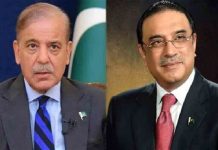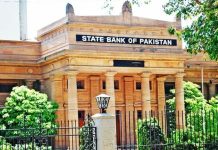From Abid Usman
LAHORE: This is the age of capsules and molecules, as artificial intelligence is being used to manipulate target people by using political tools through collecting and calculating illegal-data from biometric, A-I analysis, social media behaviours and hacking smartphone accounts.
Amid the recent detention and release of Pakistan Muslim League-Nawaz (PML-N) leader Captain (R) Safdar Awan on bail and related events, the so called Indian media had gone onto a spree of disseminating fake news, trumped-up by spreading disinformation and terming the situation as “Civil War like situation” in Karachi.
Following the arrest of Safdar, Indian mainstream channels including India Today, Zee News and CNN-18 had been reporting while depicting a fake civil war situation in Karachi and a propaganda on Financial Action Task Force (FATF) voting.
India-based social media platforms and anti-state elements had tried to create widespread alarm among the people by making day and night attempts to undermine and deteriorate the Pak-Saudi ties in the name of FATF-voting. Federal Minister for Industries and Production Hammad Azhar in his tweet, regarding fake news propaganda had termed the FATF consensus decision to keep Pakistan on the watchdog’s ‘grey list,’ for another term of four months as a diplomatic victory of the PTI government.
“FATF has acknowledged the high-level political commitment and significant progress of Pakistan Tehreek-e-Insaf (PTI) government,” he said.Some circles were propagating “false and baseless information about abstention or negative voting in the meeting, the minister lamented.
Recently, the international NGO, Reporters Without Borders or Reporters Sans Frontiers (RSF), had released its annual World Press Freedom Index (WPFI) report 2020. The said index ranks 180 countries to examine media independence, pluralism, media environment and using censorship methods in legislative framework, transparency, quality of content in news production, infrastructure and violence against journalists and media persons.
Earlier during 2018, India was ranked at 138, down two points from last year (2017), and five points from 2016. According to the latest WPFI report, India has been ranked at 142, with the index having India performing worse than countries like Afghanistan, Palestine, Nepal, Kosovo, Mali and Chad, the incredulity of the Press Council of India who had rejected the Reporters Without Borders (RSF) report, is not only understandable, but also shared by most, critical of Indian mainstream media. Commenting on the report, a noted ‘Indian National Congress’ leader Milind Deora in his essay titled: ‘For a democracy, India’s media is not in a happy state at all’ writes that “unfortunately, in India, the media was increasingly perceived to have morphed into an extension of the State, often resorting to sensationalism at the cost of visibility to issues crucial for the welfare of the people, with its bands of cheerleaders and blanket critics.”Deora had expressed the concern that it was dangerous for any country like India to have such a seemingly high degree and intensity of State control over targeted sections of the media institutions.Not only does it contribute to the fostering of an all powerful government that can escape media scrutiny, but it also makes it much easier to silence and punish any opposition to government by fabricating a case, sensationalising it through news media, and launching a State-sponsored media trial, he writes.
Federal Minister for Maritime Affairs, Ali Haider Zaidi in his recent tweet had said that ” Both social and economic indicators of Pakistan are showing positive signs.
The artificially manufactured food inflation is being brought under control as well. Pakistan is on the rise under prime
minister Imran khan. It may be mentioned here that the Foreign Office (FO) spokesperson Zahid Hafeez Chaudhri during his recent weekly media briefing had rejected the fabricated and fake news reports of Indian media regarding Saudi Arabia’s role in the assessment of Pakistan’s FATF action plan, which were being propagated, maliciously.
“Pakistan and Saudi Arabia enjoy unprecedented and strong fraternal ties and the two countries have always cooperated with each other on all matters of bilateral, political, regional, and international importance,” the spokesperson added.
Noted defence analyst Lt General (R) Naeem Khalid Lodhi told APP that the subversive agenda and attempts by the Indian media on the behest of the Pakistan obsessed Bharatiya Janata Party, Rashtriya Swayamsevak Sangh (RSS) regime were reflective of their particular mindset and designs against Pakistan.He said that it was needless to say that the Indian media’s fake and absurd claims regarding various ongoing political and diplomatic events continue to hit new lows, adding that the Indian media and the Modi’s regime would be better advised to focus on their turmoil, protests and unrest currently going on in India.
Meanwhile, the Pakistan Telecommunication Authority (PTA) has approached the ‘Twitter’ administration asking it to take serious and immediate action against fake accounts spreading false information and malicious propaganda against Pakistan. In the wake of the current absurd campaign targeting Pakistan to mislead the people by spreading false and baseless information, the sources in PTA told APP that the authority had stressed upon the Twitter administration to effectively block Indian handles who were involved in the false propaganda against Pakistan and its institutions.
However, it is pertinent to mention here that the FATF President Marcus Pleyer had praised Pakistan for successfully complying with 21 out of 27 points of action and decided to keep the country on its ‘grey list’ until February 2021.FATF president had recently announced the decision at a virtual press conference which was held after the body’s three-day plenary session.




